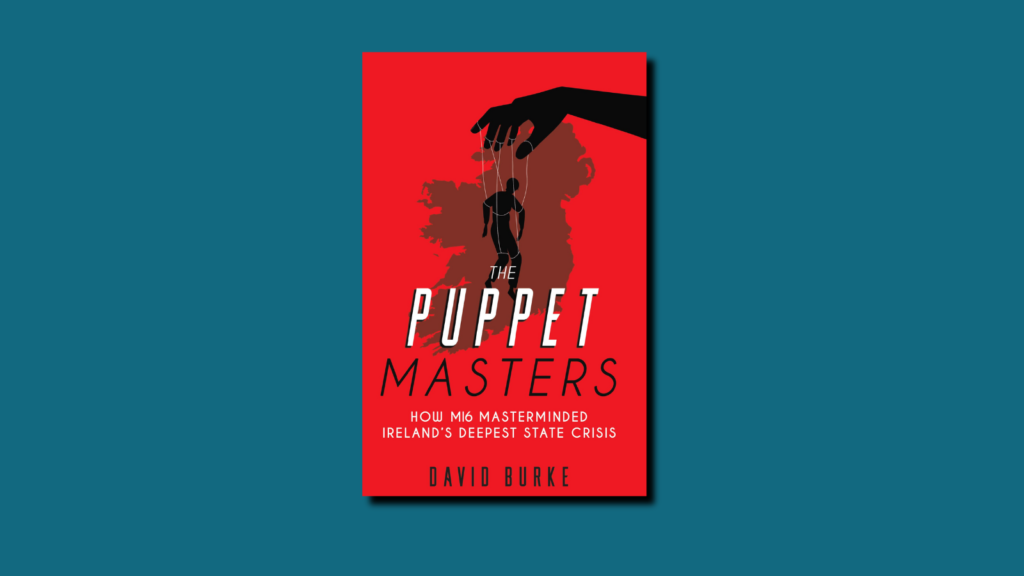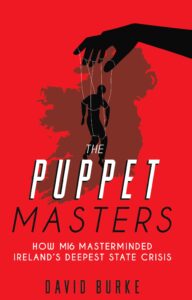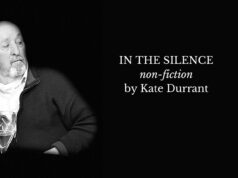
The Puppet Masters, How MI6 Masterminded Ireland’s Deepest State Crisis|David Burke|Mercier Press
Read an extract from The Puppet Masters, How MI6 Masterminded Ireland’s Deepest State Crisis, by David Burke
The Puppet Masters, How MI6 Masterminded Ireland’s Deepest State Crisis examines the career of Patrick Crinnion, a Garda Intelligence officer who worked for the British Secret Service, MI6.
In 1972 Crinnion’s British spy handlers assigned him the task of contriving a link between Charles Haughey TD of Fianna Fáil and the Mafia, in an alleged gunrunning plot for the benefit of the IRA.
Haughey had been dismissed from Cabinet for alleged gunrunning in 1970. He was acquitted in the autumn of that year and, in 1972, was busy trying to reclaim his former political status. It was at this juncture that Crinnion attempted to manufacture a link between Haughey and the Mafia.
MI6 and the Information Research Department, the black propaganda wing of Britain’s Foreign Office, were the puppet masters behind the anti-Haughey smear campaign.
Extract from The Puppet Masters
The Godfather, released in March of 1972, was a box-office smash hit around the globe. During a vital moment in the story, a Turkish gangster called Virgil Sollozzo tells Don Corleone: ‘I need a man who has powerful friends … I need, Don Corleone, those politicians you carry in your pocket, like so many nickels and dimes.’
The film swept the Oscars the following year. It reinforced the notion that corrupt politicians and gangsters could be partners in crime, at least in America.
One politician MI6 had in their cross hairs was Charles Haughey. The disdainful view of Haughey inside the service was well summarised by Anthony Verrier, a confidant of MI6’s Frank Steele, thus:
In this millionaire politician were found all those lurking sympathies for extreme action which British governments feared so much and fought so hard.1
In 1972 a character assassination team consisting of Hugh Mooney of the Information Research Department (IRD), Ambassador John Peck, the former head of the IRD, and others, was busily involved in a smear campaign against Charles Haughey.2 Absurd as it might seem now, they jumped onto The Godfather bandwagon with a scheme to link Haughey to the American Mafia.
One of the techniques employed by MI6 and the IRD to vilify targets was to circulate their slurs by word of mouth. IRD and MI6 smearmeisters called them ‘sibs’, a term derived from the Latin word (to whisper). Diplomats from the British embassy and MI6 officers kept profiles of Irish contacts in books at the embassy for a multiplicity of purposes. In the 1970s, they were able to identify likely gossips from their lists. Those at their disposal ranged from people who knew they were doing the bidding of British intelligence smear mongers, to those known in spy parlance as ‘useful idiots’.
Those at their disposal ranged from people who knew they were doing the bidding of British intelligence smear mongers, to those known in spy parlance as ‘useful idiots’.
When it came to operations against Haughey, finding willing rumour mongers was an easy task. Most of those who were friendly with the embassy tended to look down on him as a working-class upstart, a boy educated by Christian Brothers rather than in a fee-paying school. In their world, a man entered the professional world as a graduate of a private school, not on the back of scholarships as was the case with Haughey. Haughey had made a splash in the world of accountancy before he entered politics. Worse still, he was now running the economy, a position that forced many of them to bend the knee to him.
John Betjeman of the British embassy (and later Britain’s poet laureate) had trickled an assortment of ‘sibs’ into the Dublin gossip stream during the Second World War. They had been fed to Betjeman by Britain’s Psychological Warfare department. He did so by visiting Dublin’s hostelries and engaging in conversations with journalists. In the early 1970s, his successors dropped ‘sibs’ around Dublin in a like manner. One alleged that Haughey was friendly with Russian journalists whom he knew were, in reality, KGB spies.3 The method was one of incremental and relentless vilification. Another yarn claimed Haughey was directing a campaign to bomb buildings in Belfast so he could purchase them at a knock-down price.4
These fabrications, once created, had to be guided in the right direction
These fabrications, once created, had to be guided in the right direction. They were circulated to the members of golf, rugby, yacht and bridge clubs in middle-class and upper-middle-class Ireland. Certain gentlemen’s clubs in the city which were frequented by British embassy officials were hot spots for this activity too. Sibs were also circulated at garden parties at the British ambassador’s residence where guests swallowed them as eagerly as the vol-au-vents and cucumber sandwiches offered to them on silver platters.
Overall, the anti-Haughey stories made little impact as their circulation was largely confined to the elite of Irish society who already looked down on Haughey because of what Garret FitzGerald had described to the Dail in 1979 as his ‘flawed pedigree’.
The Haughey-Mafia smear, however, had the potential to reach a wider audience due to the popularity of The Godfather. A slur like that could have been spread around Dublin in a night by chatting to a few garrulous taxi drivers. The groundwork was already in place. An article had appeared in an English newspaper which alleged that an international corporation with an array of subsidiaries, including a manufacturing company in Walkinstown, was controlled by the American Mafia.5
The FBI had drawn up a report on the organisation which found its way to MI6. An extract was passed to a private detective agency, who shall be referred to here as KSE. They handed it over to Thomas Mullen. The latter, a former C3 officer, was the man who had recruited Crinnion to spy for MI6 in the early 1960s. Mullen’s task was to find some way of manufacturing a connection between Haughey and the company in Walkinstown. Mullen furnished the FBI extract to Crinnion to see what he could find out about visits by Mafia gangsters to Dublin.
- Anthony Verrier, Through the Looking Glass British Foreign Policy in an Age of Illusion (W. W. Norton & Co. New York, London, 1983), p. 325.
- David Burke, An Enemy of the Crown by David Burke, (Mercier Press, Cork, 2022), passim.
- Ibid., pp. 174-5.
- Ibid., pp. 223-30.
- Crinnion told his superiors later that people involved with the alleged Mafia organisation had taken a civil court action for defamation against the newspaper about the Mafia link and that ‘the newspaper won’.












